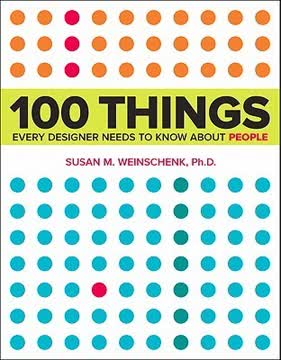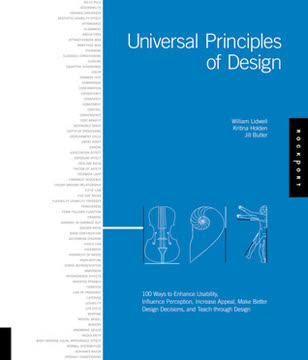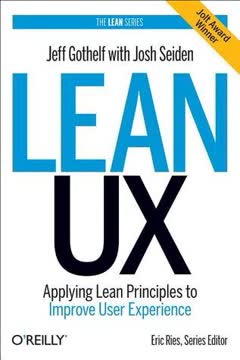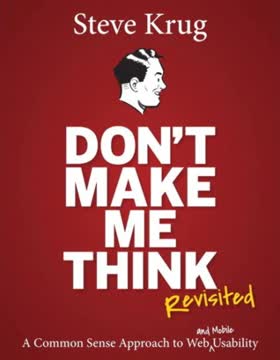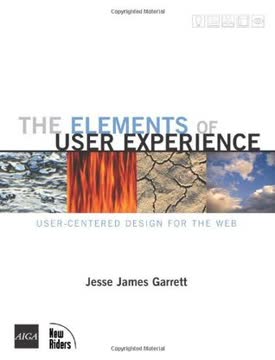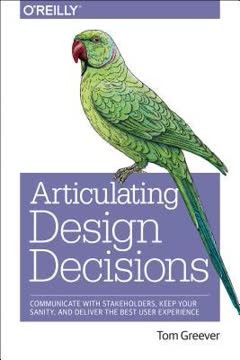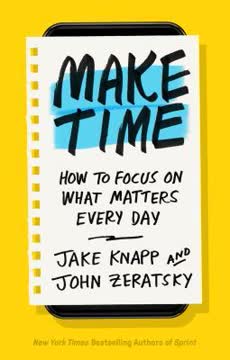نکات کلیدی
1. تعریف یک هدف بلندمدت واضح و شناسایی سوالات اسپرینت
"چرا این پروژه را انجام میدهیم؟ میخواهیم در شش ماه، یک سال یا حتی پنج سال آینده کجا باشیم؟"
اهداف بلندپروازانه تعیین کنید. اسپرینت خود را با تعریف یک هدف بلندمدت واضح که اصول و آرزوهای تیم شما را منعکس میکند، آغاز کنید. این هدف به عنوان یک چراغ راهنما عمل میکند تا همه در طول اسپرینت در یک جهت حرکت کنند. نگران بیش از حد بلندپروازانه بودن نباشید؛ فرآیند اسپرینت به شما کمک میکند تا نقطه شروع خوبی پیدا کنید و به سمت حتی بزرگترین هدف پیشرفت واقعی داشته باشید.
سوالات کلیدی را شناسایی کنید. پس از تعیین هدف، سوالات اسپرینت را که نمایانگر ناشناختهها و ریسکهای احتمالی هستند که بین تیم شما و هدف بلندمدت قرار دارند، فهرست کنید. این سوالات راهنمای راهحلها و تصمیمات شما در طول اسپرینت خواهند بود و به عنوان یک چکلیست شبهای عمل میکنند که میتوانید پس از آزمون روز جمعه به آن مراجعه کنید و ارزیابی کنید. نمونههایی از سوالات اسپرینت:
- آیا میتوانیم محصول خود را به افرادی که هرگز آن را امتحان نکردهاند توضیح دهیم؟
- آیا مشتریان به تخصص ما اعتماد خواهند کرد؟
- آیا میتوانیم به فردی کمک کنیم تا قبل از پیوستن تیمش به محصول ما را درک کند؟
2. نقشهبرداری از چالش و انتخاب هدف
"مانند جین کرانز و نمودار بازگشت به سیاره زمین، شما و تیمتان اصول اولیه را ترسیم خواهید کرد: هدف بلندمدت شما و سوالات دشواری که باید پاسخ داده شوند."
یک نقشه بصری ایجاد کنید. یک نمودار ساده ترسیم کنید که سفر مشتری از طریق محصول یا خدمات شما را نشان دهد. این نقشه باید شامل موارد زیر باشد:
- بازیگران کلیدی (مشتریان، کارکنان و غیره) در سمت چپ
- پایان (هدف محقق شده) در سمت راست
- 5-15 مرحله در میان که نشان میدهد مشتریان چگونه با محصول شما تعامل دارند
یک هدف انتخاب کنید. پس از ایجاد نقشه، تصمیمگیرنده (معمولاً مدیرعامل یا رهبر پروژه) باید یک مشتری هدف و یک رویداد هدف را در نقشه انتخاب کند. این تصمیم به تمرکز برای بقیه اسپرینت تبدیل خواهد شد—طرحها، نمونه اولیه و آزمون همگی از این انتخاب جریان مییابند.
3. راهحلهای رقابتی را به صورت فردی طراحی کنید
"طوفان فکری گروهی خراب است، اما راه بهتری وجود دارد."
به تنهایی با هم کار کنید. به جای طوفان فکری گروهی سنتی، اعضای تیم را به صورت مستقل برای توسعه راهحلها کار کنید. این رویکرد اجازه میدهد تا تفکر عمیق و ایدههای متنوع بدون تفکر گروهی ایجاد شود. فرآیند طراحی چهار مرحلهای شامل:
- یادداشتها (20 دقیقه): اطلاعات موجود را مرور کنید و یادداشت بردارید.
- ایدهها (20 دقیقه): ایدههای خام را یادداشت کنید و امیدوارکنندهترین آنها را دایره بکشید.
- Crazy 8s (8 دقیقه): به سرعت هشت واریاسیون از بهترین ایده خود را طراحی کنید.
- طراحی راهحل (30-90 دقیقه): یک استوریبورد سهپنلی از قویترین راهحل خود ایجاد کنید.
نقص را بپذیرید. به یاد داشته باشید که مهارت هنری مهم نیست؛ هر کسی میتواند با استفاده از اشکال ساده، آدمکها و کلمات یک راهحل عالی طراحی کند. تمرکز باید بر روی انتقال واضح ایدهها و حل خلاقانه مشکلات باشد.
4. تصمیمات هوشمندانه بدون بحث طولانی بگیرید
"اسپرینت به استارتاپهای ما یک ابرقدرت میدهد: آنها میتوانند به آینده پرش کنند تا محصول نهایی و واکنشهای مشتریان را ببینند، قبل از اینکه هرگونه تعهد گرانقیمتی بکنند."
از تصمیمگیری ساختاریافته استفاده کنید. برای جلوگیری از بحثهای بیپایان و اتخاذ تصمیمات کارآمد، فرآیند پنجمرحلهای "تصمیم چسبنده" را دنبال کنید:
- موزه هنر: طرحهای راهحل را روی دیوار نمایش دهید.
- نقشه حرارتی: به صورت خاموش بخشهای جالب را با برچسب نقطهای علامتگذاری کنید.
- نقد سریع: نکات برجسته هر راهحل را به سرعت بحث کنید.
- نظرسنجی سریع: هر فرد به راهحل مورد علاقه خود رأی میدهد.
- ابررأی: تصمیمگیرنده انتخاب نهایی را انجام میدهد.
به تصمیمگیرنده اعتماد کنید. در حالی که ورودی تیم ارزشمند است، اختیار نهایی تصمیمگیری باید با تصمیمگیرنده باشد. این امر جهتگیری واضحی را تضمین میکند و از فلج تصمیمگیری جلوگیری میکند. اگر ایدههای قوی و متضاد متعددی وجود دارد، در نظر بگیرید که آنها را در یک "مبارزه" نمونهسازی کنید تا به صورت رو در رو با مشتریان آزمایش شوند.
5. یک نمونه اولیه واقعگرایانه در یک روز بسازید
"وانمود کنید."
ذهنیت نمونهسازی را بپذیرید. برای ساخت یک نمونه اولیه واقعگرایانه در یک روز، این اصول را بپذیرید:
- شما میتوانید هر چیزی را نمونهسازی کنید
- نمونهها یکبار مصرف هستند
- فقط به اندازه کافی برای یادگیری بسازید، نه بیشتر
- نمونه باید واقعی به نظر برسد
بر روی نما تمرکز کنید. یک نمونه اولیه با کیفیت "Goldilocks" ایجاد کنید که به اندازه کافی واقعگرایانه باشد تا واکنشهای صادقانه مشتریان را برانگیزد، اما نه آنقدر صیقلی که ساخت آن زمان زیادی ببرد. از ابزارهایی استفاده کنید که امکان نمونهسازی سریع را فراهم میکنند، مانند Keynote یا PowerPoint برای محصولات دیجیتال، یا اصلاح اشیاء موجود برای محصولات فیزیکی.
تقسیم و تسخیر کنید. نقشها را به اعضای تیم اختصاص دهید:
- سازندگان: اجزای فردی را ایجاد کنید
- دوختزن: اجزا را به طور یکپارچه ترکیب کنید
- نویسنده: متن و محتوای واقعگرایانه بنویسید
- جمعآورنده منابع: مواد لازم را جمعآوری کنید
- مصاحبهگر: برای مصاحبههای مشتری آماده شوید
6. با مشتریان هدف آزمایش کنید تا بینشهای ارزشمندی کسب کنید
"پنج عدد جادویی است."
پنج مصاحبه انجام دهید. آزمایش با فقط پنج مشتری هدف به دقت انتخاب شده کافی است تا مهمترین الگوها و بینشها را شناسایی کنید. این رویکرد کارایی را با یادگیری ارزشمند متعادل میکند. هر مصاحبه را با استفاده از قالب مصاحبه پنجعملی ساختار دهید:
- خوشآمدگویی دوستانه
- سوالات زمینهای
- معرفی نمونه اولیه
- وظایف و تلنگرها
- خلاصه سریع
با هم مشاهده کنید. کل تیم اسپرینت را برای مشاهده مصاحبهها با هم داشته باشید و یادداشتها را روی یادداشتهای چسبنده بنویسید. این مشاهده مشترک اجازه میدهد تا الگوها به سرعت شناسایی شوند و از تفسیر نادرست نتایج جلوگیری شود. از یک شبکه ساده برای سازماندهی یادداشتها استفاده کنید، با ستونهایی برای هر مشتری و ردیفهایی برای جنبههای مختلف نمونه اولیه.
7. بر اساس بازخورد مشتری یاد بگیرید و مراحل بعدی را برنامهریزی کنید
"هر بار یک برنده."
الگوها را شناسایی کنید. پس از مصاحبهها، یادداشتهای جمعآوری شده را به عنوان یک تیم مرور کنید. به دنبال الگوهایی باشید که در بین چندین مشتری ظاهر میشوند و به واکنشهای قوی (مثبت یا منفی) توجه ویژهای داشته باشید. این الگوها و بینشها را به عنوان آنها که به سوالات اسپرینت و هدف بلندمدت شما مربوط میشوند، دستهبندی کنید.
مراحل بعدی را تعیین کنید. بر اساس الگوها و بینشهای جمعآوری شده، در مورد مسیر بعدی خود تصمیم بگیرید. نتایج ممکن شامل:
- شکست کارآمد: کشف اینکه یک راهحل کار نمیکند، صرفهجویی در زمان و منابع
- موفقیت ناقص: شناسایی یک جهت امیدوارکننده که نیاز به اصلاح دارد
- برنده واضح: تأیید یک راهحل موفق آماده برای اجرا
به یاد داشته باشید که هر نتیجه اسپرینت یادگیری ارزشمندی را فراهم میکند، چه اعتبارسنجی ایدهها، کشف مشکلات پنهان یا آشکار کردن فرصتهای جدید. از این اطلاعات برای هدایت تلاشهای آینده خود و بهبود محصول یا خدمات خود استفاده کنید.
آخرین بهروزرسانی::
FAQ
What's "Sprint: How to Solve Big Problems and Test New Ideas in Just Five Days" about?
- Overview: "Sprint" by Jake Knapp, John Zeratsky, and Braden Kowitz is a guide to solving big problems and testing new ideas in just five days. It outlines a structured process developed at Google Ventures.
- Purpose: The book aims to help teams quickly move from idea to prototype, allowing them to test and learn from real-world feedback without extensive time or resource investment.
- Structure: The sprint process is broken down into five days, each with specific tasks and goals, from understanding the problem to testing a prototype with real users.
- Audience: It's designed for teams in startups, large companies, and even educational settings who need a fast, efficient way to innovate and make decisions.
Why should I read "Sprint"?
- Efficiency: The book offers a proven method to accelerate decision-making and innovation, which is valuable for anyone facing tight deadlines or resource constraints.
- Practicality: It provides a step-by-step guide that can be applied to a wide range of challenges, making it a versatile tool for problem-solving.
- Real-world Examples: The authors share numerous case studies from their experiences at Google Ventures, illustrating the effectiveness of the sprint process.
- Team Collaboration: It emphasizes the importance of diverse team input and structured collaboration, which can improve team dynamics and outcomes.
What are the key takeaways of "Sprint"?
- Structured Process: The sprint is a five-day process that includes understanding the problem, sketching solutions, deciding on the best ideas, prototyping, and testing with users.
- Focus on Prototyping: The book stresses the importance of creating a realistic prototype quickly to gather user feedback and make informed decisions.
- Team Dynamics: It highlights the value of having a diverse team and a clear decision-maker to guide the process and ensure progress.
- Learning from Users: Testing with real users is crucial to validate ideas and uncover insights that can guide future development.
How does the sprint process work in "Sprint"?
- Day 1 - Understand: The team sets a long-term goal, maps the problem, and gathers insights from experts to identify key questions.
- Day 2 - Sketch: Team members work individually to sketch solutions, drawing on existing ideas and inspiration.
- Day 3 - Decide: The team reviews sketches, votes on the best ideas, and creates a storyboard for the prototype.
- Day 4 - Prototype: A realistic prototype is built quickly, focusing on creating a façade that appears real to users.
- Day 5 - Test: The prototype is tested with real users, and the team observes and learns from their reactions to inform next steps.
What is the "prototype mindset" in "Sprint"?
- Disposable Prototypes: Prototypes should be built quickly and be disposable, focusing on learning rather than perfection.
- Realistic Appearance: The prototype must appear real to users to elicit genuine reactions and feedback.
- Focus on Learning: The goal is to learn as much as possible from user interactions, not to create a finished product.
- Optimism and Resourcefulness: Teams should believe they can prototype anything and be resourceful in finding ways to simulate the final product.
How do you decide on the best ideas in "Sprint"?
- Heat Map Voting: Team members silently review sketches and use dot stickers to vote on the most promising parts of each idea.
- Speed Critique: The team discusses the highlights of each sketch, focusing on areas with the most votes.
- Straw Poll: Each team member votes for their favorite idea, providing input for the final decision.
- Supervote: The Decider makes the final call, using their judgment and the team's input to choose the ideas to prototype.
What role do team dynamics play in "Sprint"?
- Diverse Team: A mix of skills and perspectives is crucial for generating a wide range of ideas and solutions.
- Decider's Role: The Decider is responsible for making final decisions, ensuring the team stays focused and aligned.
- Facilitator's Role: The Facilitator manages the process, keeps the team on track, and ensures productive discussions.
- Collaboration and Independence: While collaboration is key, the process also emphasizes individual work to avoid groupthink and encourage diverse solutions.
How do you test prototypes with users in "Sprint"?
- Five-Act Interview: The interview is structured into five acts: a friendly welcome, context questions, prototype introduction, tasks and nudges, and a quick debrief.
- Think Aloud: Users are encouraged to think aloud as they interact with the prototype, providing insights into their thoughts and reactions.
- Observe Patterns: The team watches the interviews together, taking notes and looking for patterns in user feedback.
- Iterate Based on Feedback: The insights gathered from user testing inform the next steps, whether it's refining the prototype or pivoting to a new idea.
What are some real-world examples from "Sprint"?
- Slack: The book details how Slack used the sprint process to refine their product explanation for non-tech customers, leading to significant improvements.
- Blue Bottle Coffee: The team used a sprint to develop an online store that effectively conveyed their brand's quality and expertise.
- Savioke: The sprint helped Savioke develop a friendly robot personality that enhanced guest experiences in hotels.
- FitStar: The process was used to clarify the value proposition of a fitness app, leading to better user understanding and engagement.
What are the best quotes from "Sprint" and what do they mean?
- "Start at the end." This quote emphasizes the importance of defining a clear long-term goal and working backward to identify the steps needed to achieve it.
- "You can prototype anything." It highlights the book's core belief that with the right mindset and tools, any idea can be quickly turned into a testable prototype.
- "Work alone together." This phrase captures the balance between individual creativity and team collaboration, which is central to the sprint process.
- "The prototype must appear real." It underscores the necessity of creating a realistic façade to gather genuine user feedback.
How can "Sprint" be applied in different contexts?
- Startups: The sprint process is ideal for startups needing to quickly validate ideas and make informed decisions with limited resources.
- Large Companies: It can help large organizations innovate and solve complex problems by fostering a focused, collaborative environment.
- Education: Educators can use sprints to teach problem-solving and design thinking, as demonstrated by examples from universities and high schools.
- Nonprofits and Government: The process can be adapted to address challenges in these sectors, helping teams develop and test solutions efficiently.
What are some common challenges when implementing "Sprint"?
- Time Commitment: Clearing five full days for a sprint can be challenging, especially in larger organizations with busy schedules.
- Decider's Involvement: Ensuring the Decider is present and engaged throughout the sprint is crucial for making effective decisions.
- Prototyping Skills: Teams may need to learn new tools and techniques to create realistic prototypes quickly.
- User Recruitment: Finding and scheduling the right users for testing can be time-consuming but is essential for meaningful feedback.
نقد و بررسی
کتاب اسپرینت به دلیل رویکرد عملیاش در نمونهسازی سریع و حل مسئله، عمدتاً نقدهای مثبتی دریافت میکند. خوانندگان از دستورالعملهای واضح و گامبهگام و مثالهای واقعی آن قدردانی میکنند. بسیاری تکنیکهای کتاب را برای صنایع مختلف و اندازههای تیمی مفید میدانند. برخی به کمبود اصالت آن انتقاد میکنند و به شباهتهای آن با روشهای موجود اشاره دارند. دیگران احساس میکنند که محتوا میتوانست مختصرتر باشد. بهطور کلی، منتقدان به بینشهای عملی کتاب و پتانسیل آن برای تسریع نوآوری ارزش مینهند، اگرچه برخی به کاربرد گستردهتر یا عمق تحلیل آن تردید دارند.
Similar Books

